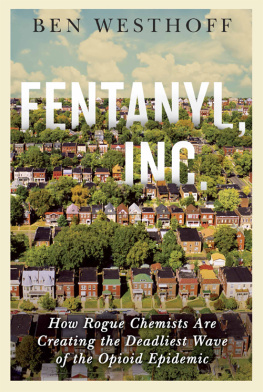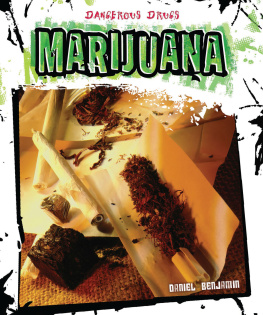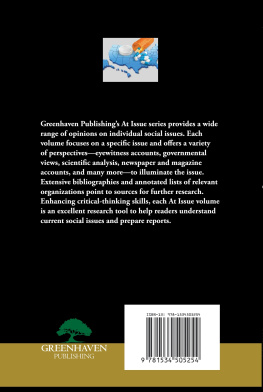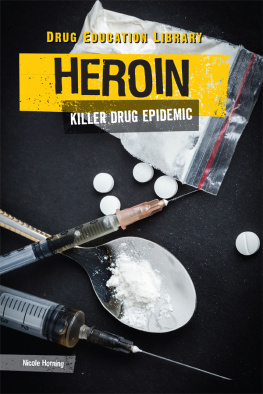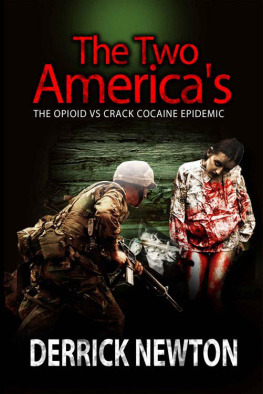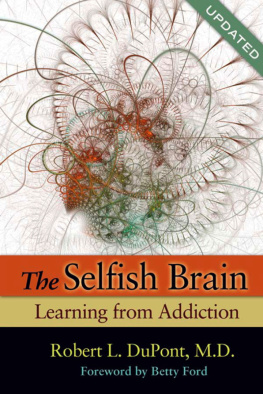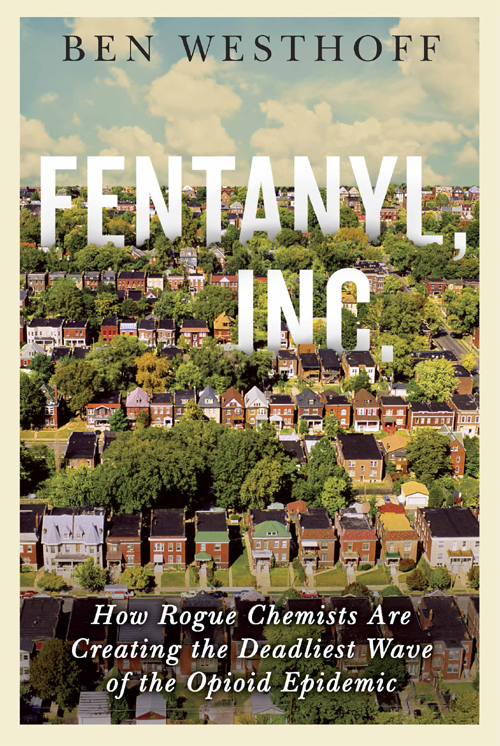Original Gangstas: Tupac Shakur, Dr. Dre,
Eazy-E, Ice Cube, and the Birth of West Coast Rap
Dirty South: OutKast, Lil Wayne, Soulja Boy,
and the Southern Rappers Who Reinvented Hip-Hop
BEN WESTHOFF
FENTANYL, INC.
How Rogue Chemists Are Creating the Deadliest Wave of the Opioid Epidemic

Copyright 2019 by Ben Westhoff
Cever design by David Drummond
Cever photograph Alamy/David R. Frazier Photolibrary, Inc.
All rights reserved. No part of this book may be reproduced in any form or by any electronic or mechanical means, including information storage and retrieval systems, without permission in writing from the publisher, except by a reviewer, who may quote brief passages in a review. Scanning, uploading, and electronic distribution of this book or the facilitation of such without the permission of the publisher is prohibited. Please purchase only authorized electronic editions, and do not participate in or encourage electronic piracy of copyrighted materials. Your support of the authors rights is appreciated. Any member of educational institutions wishing to photocopy part or all of the work for classroom use, or anthology, should send inquiries to Grove Atlantic, 154 West 14th Street, New York, NY 10011 or permissions@groveatlantic.com.
FIRST EDITION
Published simultaneously in Canada
Printed in Canada
First Grove Atlantic hardcover edition: September 2019
Designed by Norman E. Tuttle of Alpha Design &. Composition
This book was set in 12-point Adobe Caslon Pro by
Alpha Design &. Composition of Pittsfield, NH.
Library of Congress Cataloging-in-Publication data is available for this title.
ISBN 978-0-8021-2743-3
eISBN 978-0-8021-4795-0
Atlantic Monthly Press
an imprint of Grove Atlantic
154 West 14th Street
New York, NY 10011
Distributed by Publishers Group West
groveatlantic.com
19 20 21 22 10 9 8 7 6 5 4 3 2 1
In memory of Michael Helias Schafermeyer, inspired artist, generous soul
For Christmas vacation in 2014, on a road trip, driving west across the snowy plains of North Dakota. The recent high school graduate departed his apartment in Grand Forks with his roommate, Kain Schwandt. They passed the University of North Dakota, the lumber store, and the town landfill, before the city gave way to farmland. The sky began to open up.
Henke, who wore a chinstrap beard, put U2 on the stereo and watched the scenery speed by. Prone to goofy sarcasm, he had a way of putting others at ease, of putting on a brave face no matter how he felt inside. He and Schwandt knew that what lay ahead of them on this trip, that it wouldnt be easy, but they felt optimistic. They werent just visiting family members for the holiday. They were traveling with a specific purpose: to get well.
The two eighteen-year-old friends had developed opioid addictions. In addition to nasty heroin habits, they had recently become consumed by an even more potent and destructive drug called fentanyl.
Most people, if they knew of fentanyl at all back then, knew of it as a medicine. Doctors had used it for decades, during surgeries, in epidurals for women during childbirth, and to help cancer patients and others in great pain. But around the time Henke and Schwandt started using it, fentanyl abuse was becoming increasingly common. Like heroin, fentanyl is a derivative of morphine, capable of producing both great pleasure and great sufferingexcept it can be fifty times stronger than heroin. Even a tiny amount can overwhelm the respiratory system, causing users to stop breathing.
Henke and Schwandt initially got their fentanyl from medical patches, bought on the black market. The prescription-grade patches were intended to be stuck onto ones chest or upper arm, to relieve pain, but Henke and Schwandt didnt use them that way. Instead, they cut them open with a knife and squeezed out the fentanyl gel onto tin foil, and smoked it through a tube. (They didnt shoot it up because they didnt like needles.) Later Henke acquired fentanyl in a white powder form that was made illicitly.
Fentanyl gave an incredibly powerful highunlike anything the teens or their friends had ever experienced.
it until Bailey brought some over one day, Henkes friend Tanner Gerszewski said. He showed me a tiny little bit and said, Thats $150 worth. Gerszewski thought it was a rip-off until they smoked some together. I barely even got any smoke, but I was just blown away. I was sweating. I got a call, but couldnt see the phone well enough to answer it. Heroin is strong stuff, but fentanyl is just completely on another level.
Even though Henke had been smoking heroin for some time, fentanyl raised the stakes. He was experiencing a rough patch in his life. Not long before, he had split with his girlfriend after going through her text messages and discovering she was seeing someone else. And though he dreamed of becoming a cop, he had recently dropped out of community college in nearby Devils Lake and started working at a local car dealership. Their drug habits were dragging them down, and so he and his close friend Schwandt resolved to get clean, to go through withdrawal on this road trip together, far away from their drug suppliers and their corrosive influences.
Opioid withdrawal is notoriously difficult, but the two young men had help in the form of Suboxonea medication designed to help people beat these types of addictions. Perhaps just as important, they had each other.
Still, they expected roadblocks and soon encountered a literal one in the form of a massive blizzard. Before they could reach Minot, the western North Dakota town to which Baileys parents had moved, the roads became almost impassable. Finally a local police officer, taking pity on the travelers, turned on his lights and led a caravan of cars slowly down the highway, and they safely arrived at their destination. While in Minot, they hung out with Henkes parents, went to the mall, and laughed a lot.
really nice Christmas, said Baileys mom, Laura Henke.
Henke and Schwandt did their best to hide their withdrawal symptoms, which were beginning to kick in. It was really uncomfortable, Schwandt said. After Henkes parents went to bed, they would stay up late and play video games, pilfering some beers or vodka from the liquor cabinet. The booze helped him sleep, Schwandt said, and Henkes parents were none the wiser.
In fact, Laura Henke didnt notice anything out of the ordinary. As far as I knew, they werent using, she said. The truth is, she had absolutely no idea what her son was up against. She had never even heard of fentanyl.
I was clueless, she told me.
Laura Henke wasnt alone. As recently as 2015, very few Americans were familiar with fentanyl.
After the heroin and prescription pill crisis took off in the 1990s and reached epidemic levels in the following decades, heartbreaking reports increasingly appeared about decimated communities, about young victims cut down in their prime.
Yet while civic leaders, law enforcement, and politicians struggled to find answers, fentanyl was quietly creating a brand-new drug epidemic, one that quickly outstripped the previous one and has become more destructive than any drug crisis in American history: worse than crack in the 1980s, worse than meth in the first decade of the 2000s, worse than heroin and prescription pills in the 2010s. deadliest drug in America, CDC confirms, read a December 2018 CNN headline.

